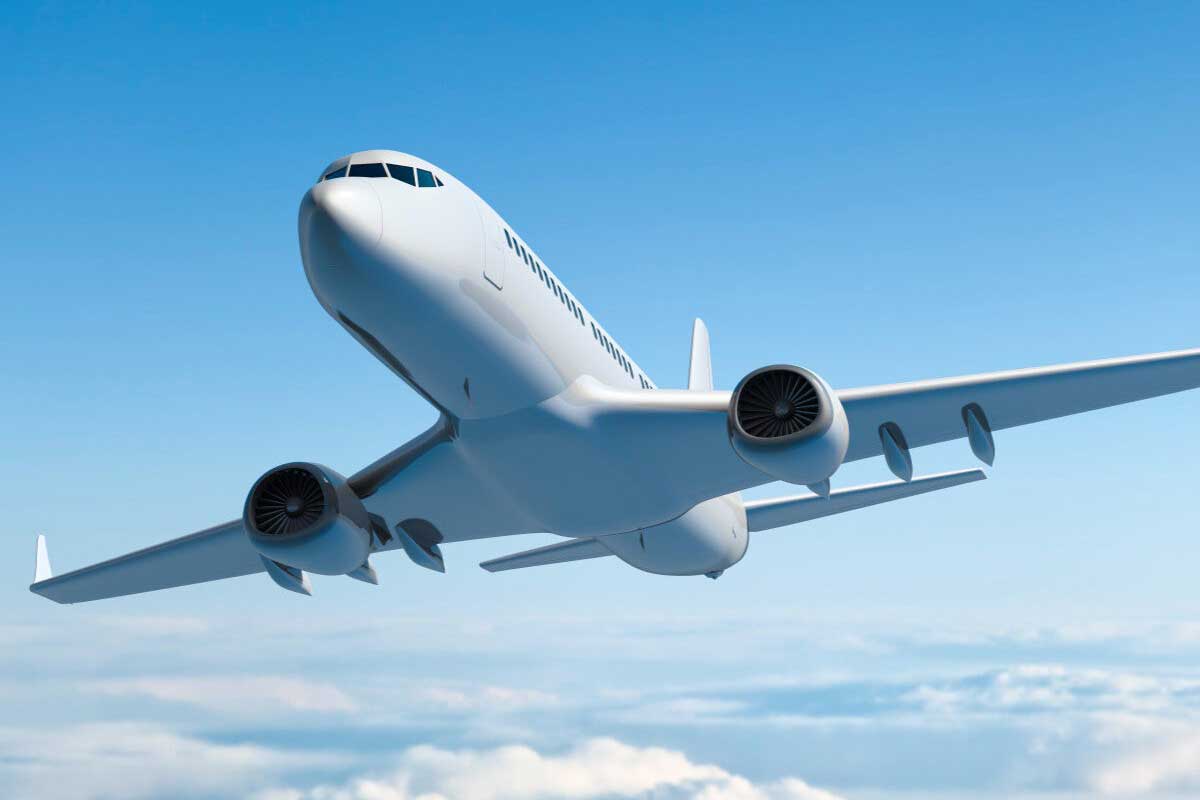Success Stories
Taking On the Heat for In-Air Advertising
Avion Graphics Turns to Flexcon for Flame Retardant Adhesive

The Project
Anyone supplying self-adhesive graphics to advertisers knows that clean removability without damage to the surface underneath is essential. The last thing advertising space owners want is to have to repair surfaces because an adhesive is too aggressive. This isn’t a challenge in most instances, but for one rather complex application for printer Avion Graphics, the existing market of adhesives simply didn’t offer a viable solution. So, hand in hand, Avion and Flexcon worked together to quickly develop a high-quality solution.
Avion is a world leader in the transit advertising space producing wraps, signage and decals for airplanes, trucks, buses and more. Back in 2008, they had won the opportunity to supply advertising graphics for commercial airplanes to be placed on overhead bins, bulkheads and tray tables. This may sound odd to those who fly only in the U.S., but in India and Asia, such advertising is very common. And with a turn of 3-6 months on the ads, this is a significant piece of business for Avion.
The Challenge
The product Avion uses for advertising on aircraft interiors is not your standard out-of-home graphics construction. It’s a patented, thick, multi-layered construction that’s laminated together at high heat, making for durability specifications far beyond the basic. Furthermore, the mounting adhesive used on the back of it must meet FAA flame retardant standards. When this opportunity first came about for Avion, there was only one pressure-sensitive adhesive on the market that met those standards.
Unfortunately, the adhesive was a bit too aggressive, taking some of the paint with it every time graphics were changed out, but since it was the only option, everyone involved – the airlines, advertisers and installers – all tolerated this shortcoming. Fast forward 12 years, however, and Avion got the dreaded call where their customer said, ‘We need something that doesn’t cause these problems, or our customers are going to stop buying from us.’ It was critical that they find a solution – fast!
Avion was already using Flexcon products for other parts of the construction, as well as purchasing a variety of mounting adhesives from us for other applications, so why not give Flexcon the opportunity to meet this challenge and develop a suitable product? Pete Gardikas, Global Sales and Special Project Manager at Avion, reached out to his Flexcon sales representative, Mark Goldwater, for help. Pete says, “I knew Flexcon would be an excellent partner for this project. They hear me and care about helping my business.”
The Process
This would be Avion and Flexcon’s first time working together on a custom project of this magnitude, and the stakes were high, so Mark immediately put Pete in touch with Aaron Elman, one of our Application Development Engineers. We didn’t already have an adhesive that had been tested for flammability, but in a matter of days, Aaron and Pete were able to map out the specs and identify a short list of Flexcon adhesives that might be suitable. Now it was time for testing.
Step 1. Qualify for Adhesion. The first thing was to be sure the adhesive met the needs of end users. It had to stay adhered for the duration of the campaign, but then remove cleanly without damaging the polycarbonate surface. The end users are outside of the U.S., which added a level of complexity, but despite some challenges associated with time zone differences and language barriers, Flexcon and Avion were able to obtain feedback from end users and confirm which adhesives would make the cut.
Step 2. Flammability Testing. Once adhesives were qualified in terms of adhesion, they had to be submitted for testing pursuant to FAR 25.853, the FAA’s flame retardancy standard for the interior compartments of aircraft occupied by crew or passengers. The testing involves subjecting a sample to a flame for a specified period of time. During that time, the sample must not burn more than a specified distance, and it must self-extinguish within a specified time period. Several adhesives got burned before the most appropriate one could be certified, and Flexcon’s® L-59FR, a new flame-retardant adhesive, was born!
Step 3. Process Testing. Once the adhesive was qualified, the team had to be sure that the full construction could withstand Avion’s high-heat lamination process. It was evaluated by the customer and determined to be a fit for the application.
The process took only a matter of weeks to complete. More importantly, Avion was able to protect an important piece of business at a cost only slightly higher than what they’d been paying off-the-shelf. “To get a custom product from Flexcon for a comparable price to the off-the-shelf product we had been buying speaks volumes of Flexcon,” says Pete.
The Result
Pete Gardikas is breathing a lot easier these days. The end users are satisfied with this new, better performing product. His customers are relieved to have resolved a long-standing issue. And Pete is confident that he’s adequately protected a key piece of business. In fact, the advertising graphic division has been one of the fastest growing at Avion Graphics, and Pete is hopeful to grow this division into 10% of Avion’s total business within the next five years. Pete says, “I’ll never regret having put my confidence in Flexcon. The next time I have an application challenge, they’ll be my first call.”
For inquiries about this patented product, please contact Pete Gardikas at (949) 860-0106 or visit www.aviongraphics.com.